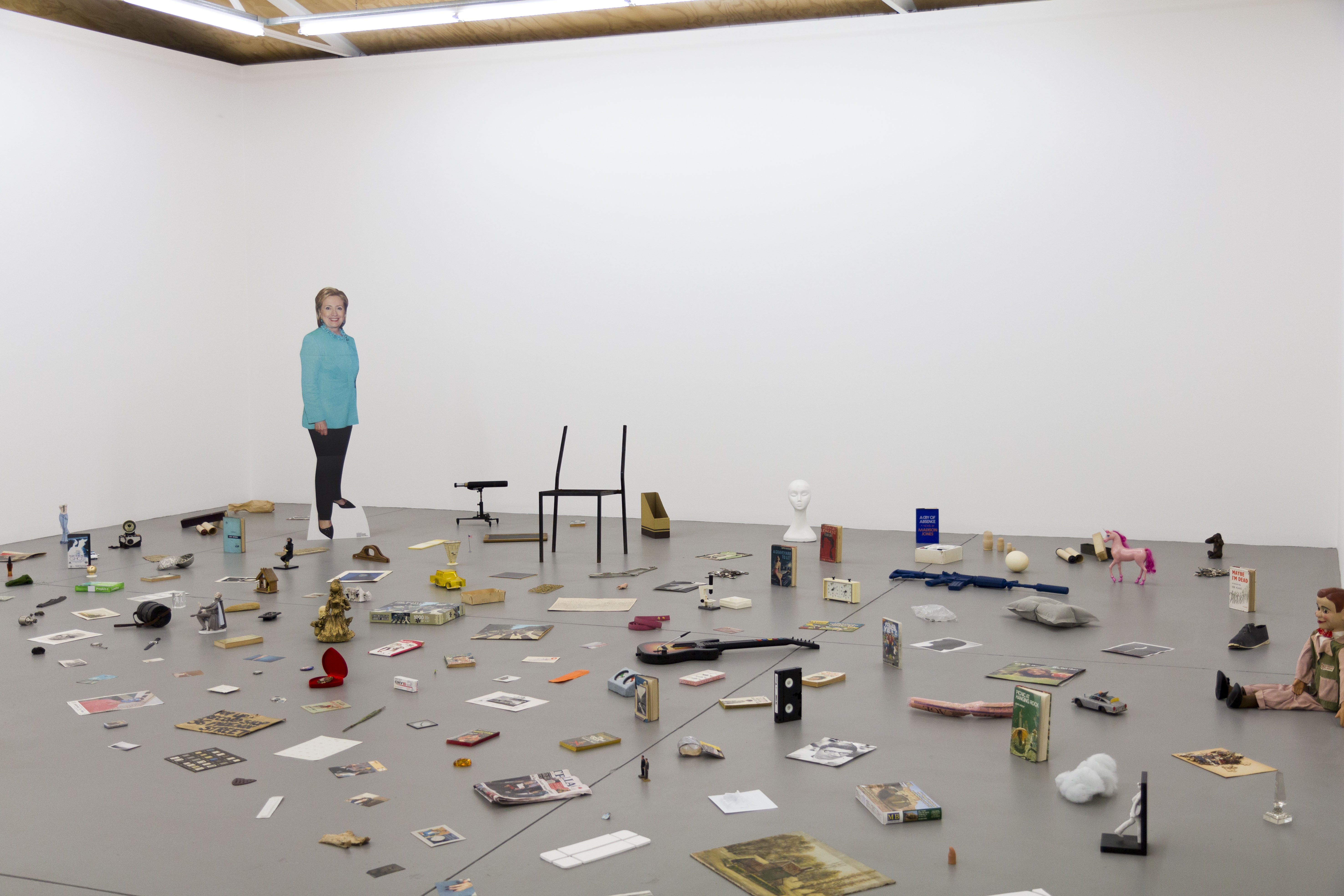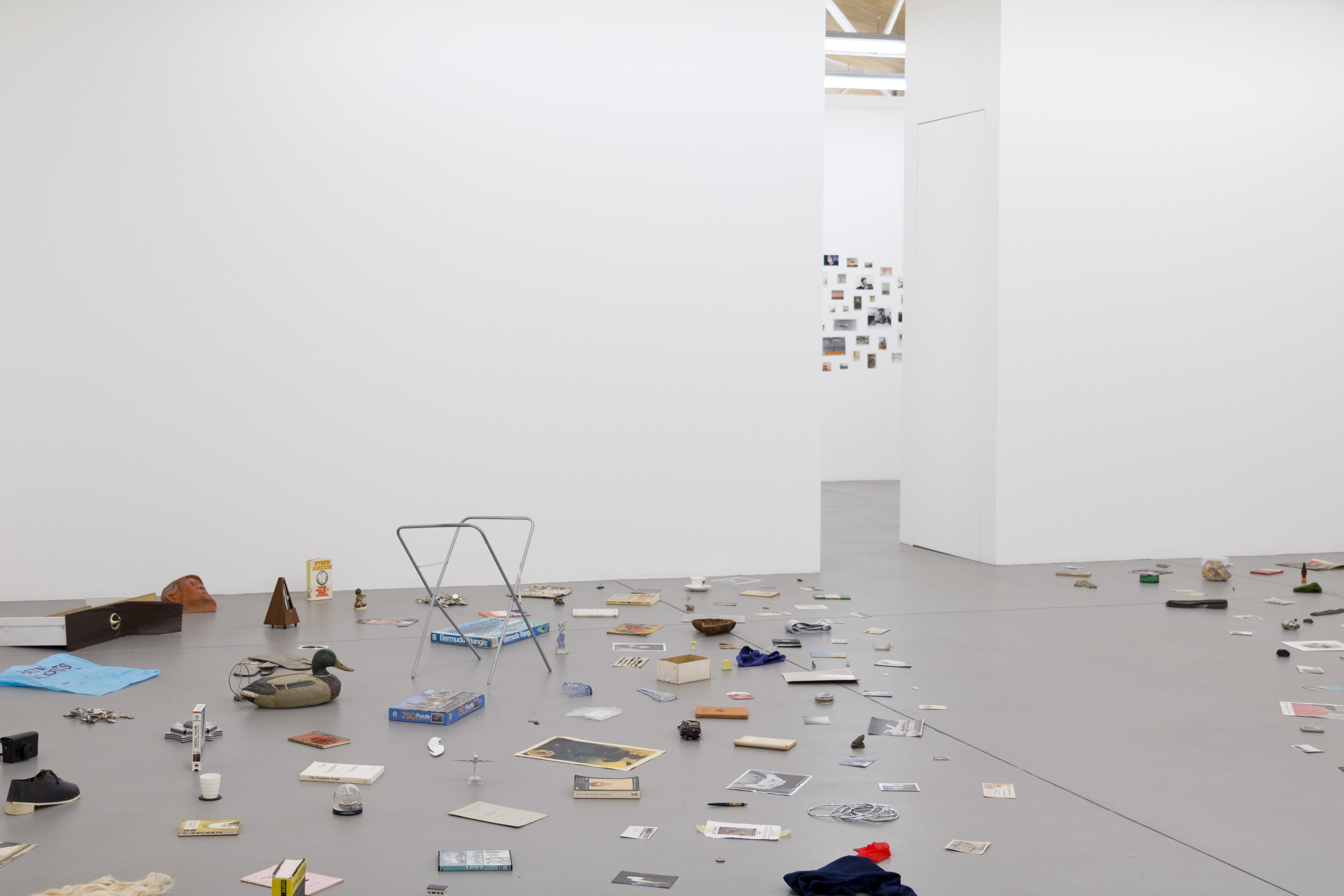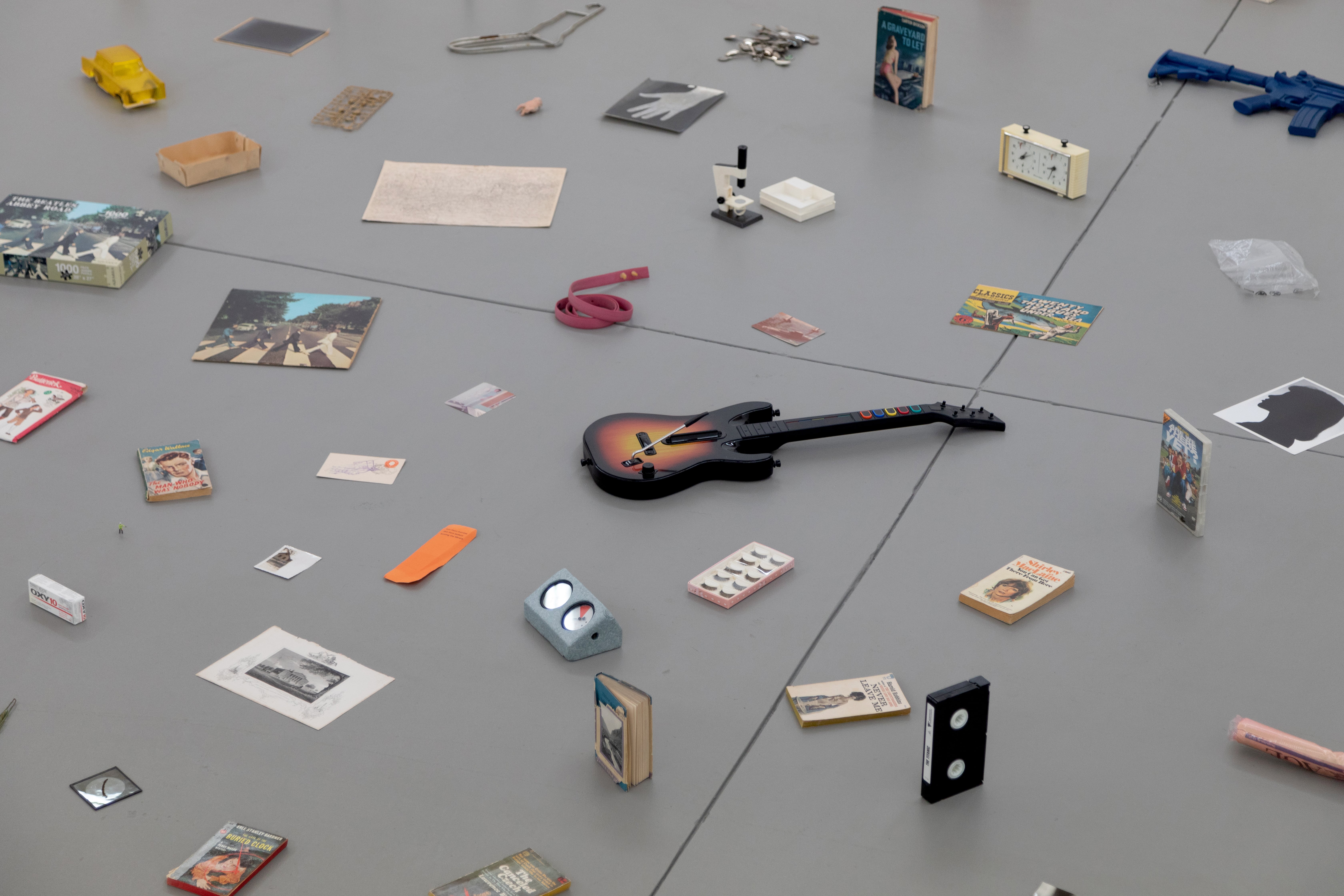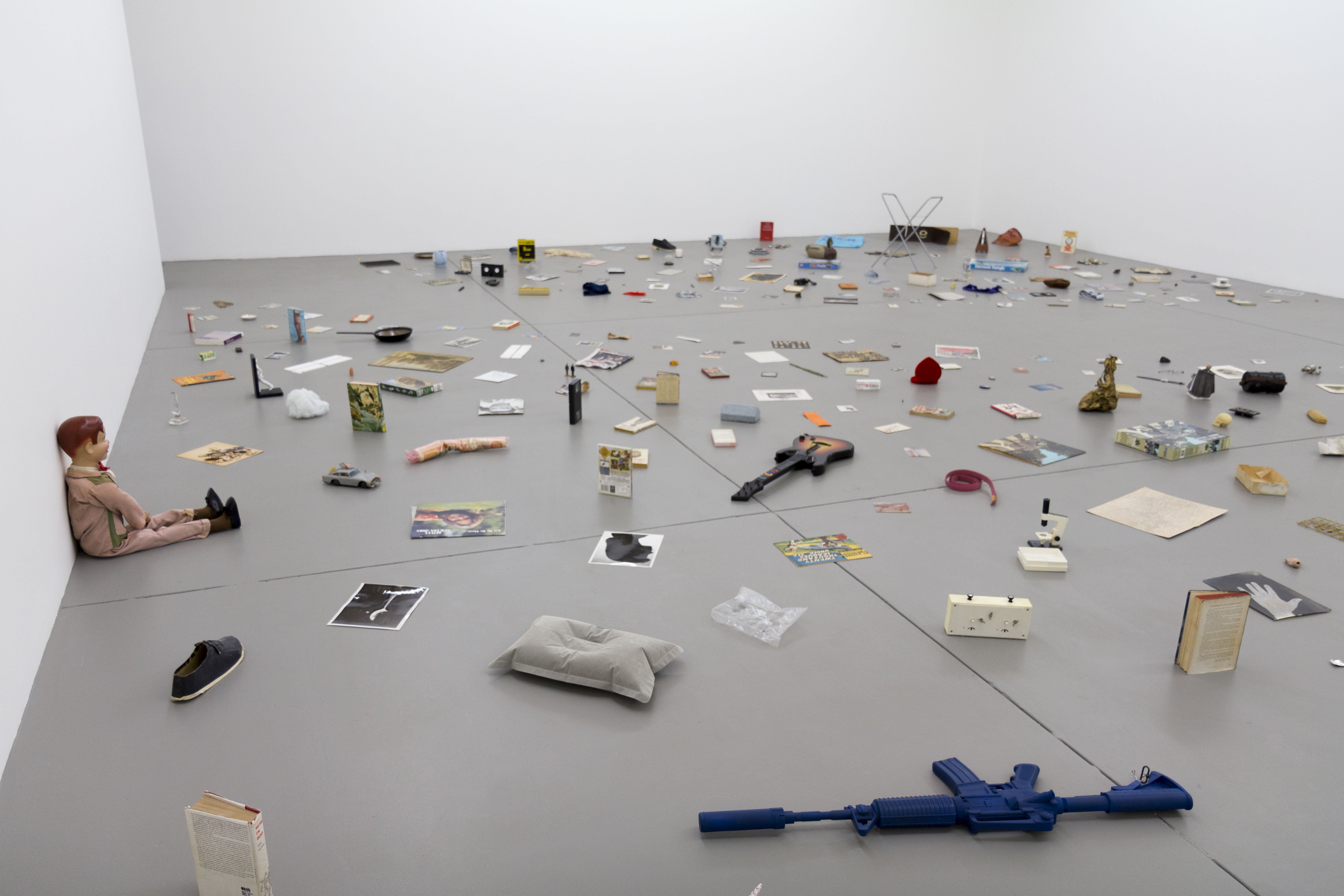



I ride across town early on a Friday morning for a private viewing of Patrick Pound’s new exhibition at STATION Gallery in South Yarra. Private viewings are the only kind of physical viewing in the age of COVID-19 and after weeks of quarantine (in the midst of quarantine) it feels indulgent, luxurious even, to be going to see art IRL. The streets are quiet; I ride in the middle of the main road. This normally busy city is suddenly defined not by what is there but by what isn’t, by the absence of the people that anchor it, that give it meaning.
This is a neat segue, as it happens, into The museum of there, not there.
**
The artist’s practice is one of archivist, collector, curator, map maker. From his ever-growing collection of objects, foraged from op shops and bought online, Pound creates his themed installations, his museums of things. Within each museum lie common threads that resist narrative but instead represent a kind of internal logic that is at once imposed and organic — by Pound who creates new context(s) through the grouping of found and often obsolete objects, and by each individual audience member’s specific subjective contextual relationship to both object and installation.
The current iteration of The museum of there, not there at STATION is both a rework, an extension (a sequel?) of a previous exhibition of the same name, shown as part of the artist’s solo show at the National Gallery of Victoria in 2017, and a response to the particularities of the current stasis in which we find ourselves. Indeed, Pound creates his museums from his ongoing personal archives of collections and thus is uniquely placed to create works that are simultaneously anticipatory and responsive, inward- and outward-looking.
The theme of dual absence/presence is an ongoing one in Pound’s work and yet seems to speak to this specific social moment in time, one in which our physical presence is defined by its absence more broadly, in which the big bad we are all avoiding is one that we cannot see (I’m tempted to indulge in some kind of Buffy/First Evil metaphor here, but I’ll restrain myself). What is both ironic and beautiful about this current museum of Pound’s is that the artistic exploration of partiality is replicated in our access, a symbiosis of content, form and audience. Most of us will only ever get to see this exhibition digitally and thus, inevitably, partially; our engagement with the work becomes defined by our not there-ness.
**
The front room of the gallery, The museum of there, not there, is an array of objects carefully placed from wall to wall, a single path woven through the centre for us to walk through. At first glance the museum is careful but haphazard — the notes on my iPhone read thus:
ventriloquist dummy in a green vest // pink plastic unicorn // VHS of Ghost // life-size cardboard cut-out of Hilary Rodham Clinton // orange rubber Donald Trump mask // ball of unspun yarn // pile of used stamps // Abbey Road jigsaw puzzle // Abbey Road record // old-school microscope // watch // copy of The Australian with the cover story of La La Land mistakenly being announced as the ‘Best Picture’ Oscar winner // empty plastic scissor packet // blonde wig // wooden duck decoy // metal chair frame // metal folding stool frame // plastic hourglass // picture of JFK // pair of women’s underwear, dark blue, tag still on // small plastic model Malaysia Airlines airplane // Gary Glitter Remember Me This Way: It’s Not a Lot But It’s All I Got record / Oxy10 extra strength vanishing cream // half a drinking glass // piles of teaspoons (two) // hardback copy of Sartre’s Being and Nothingness // Beckett’s Waiting for Godot // snow globe // half-inflated airplane pillow // dark brown light switch // old square clock // polystyrene mannequin head // metronome // unopened letter
Of course, a closer examination draws out the thematic interconnections within the installed museum, each object carefully chosen to embody there, not there. Some quite literally represent absence — packaging without the scissors, a wig without a head, a chair frame without the seat. Others allude to the idea of never-was — a cardboard cutout of America’s first female presidency that never eventuated, an unworn pair of women’s underwear, an unpainted set of matryoshka dolls. Others still embody the simultaneity of presence/absence as an ongoing philosophical illusion of the senses — a hardcopy of Sartre’s Being and Nothingness, a VHS copy of Ghost, a ventriloquist doll.
**
While Pound’s museums are a form of ordering, a kind of poetic categorisation, they strike me as inherently rhizomic in nature, an attempt to ‘ceaselessly establish connections between semiotic chains’.1 Indeed, this array of, at a glance, seemingly disparate objects with complex strands of connection are fundamentally Deleuze-ian in nature, horizontal maps ‘connecting any point to any other point'.2 There is no beginning and no end to Pound’s museums, and yet they are not circular nor hierarchical either. An endlessly morphing archive; an album on repeat without the liner notes.
Indeed, this curious puzzle that Pound’s installations spark — the allusion to interconnectivity — is embedded in the etymology of the museum itself. From the Greek ‘seat of muses’, a museum is not merely a house of display nor Wunderkammer (though it is those things, too), but a place of learning and philosophical concern. And herein lies the ongoing drawcard of Pound’s museums. Yes — they are wonderfully Instagram friendly. And yes — they are delightfully nostalgic (VHS tapes! Gary Glitter, pre-conviction!). And yes — they are imbued with humour (the inclusion of a model Malaysia Airlines plane may be dark, but it is also funny). But above all else, they are a puzzle to unravel, a map with no markers, an endless intrigue.
Sarah Gory is a writer and editor. She is the Managing Editor of un Projects, and writes at the intersection of art, memoir and critique.
